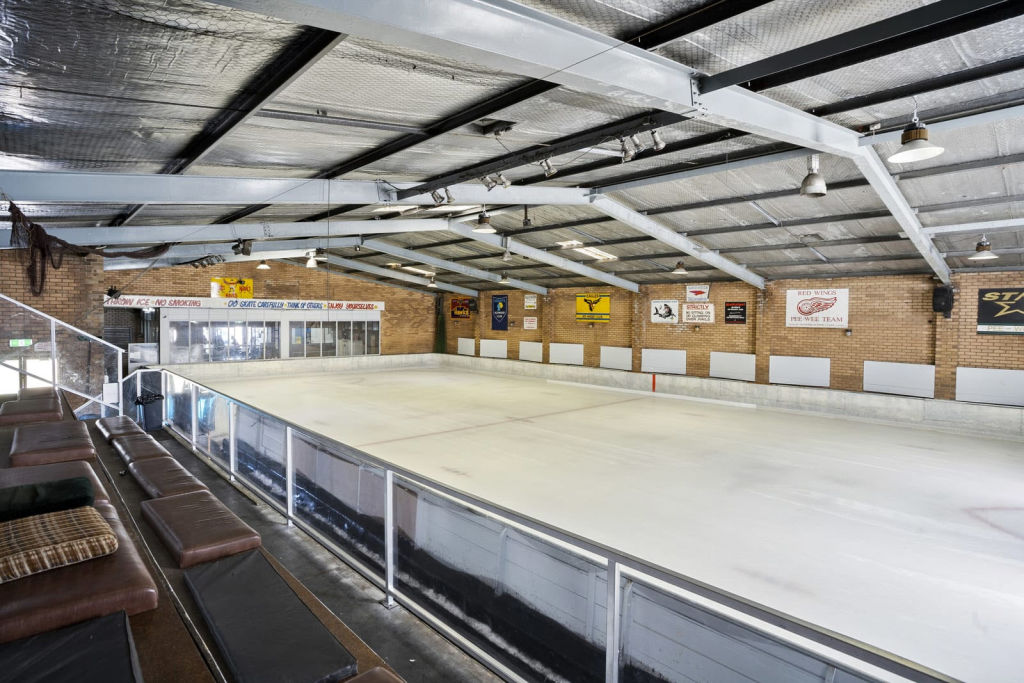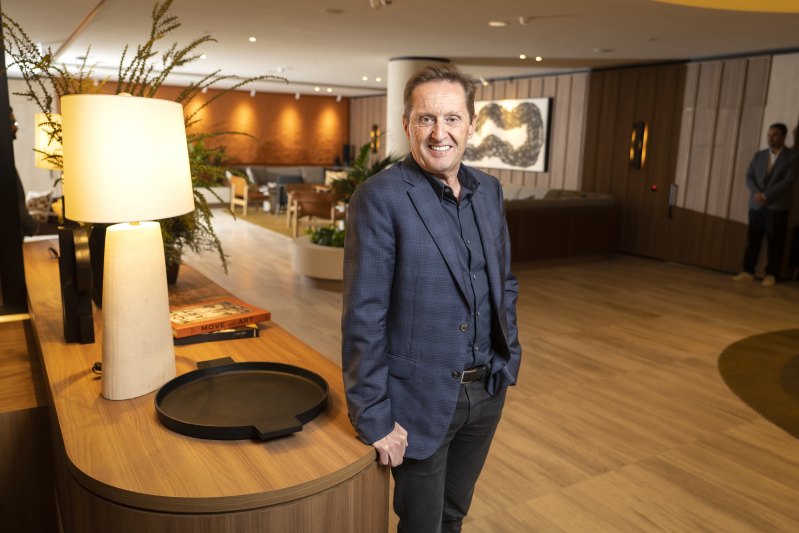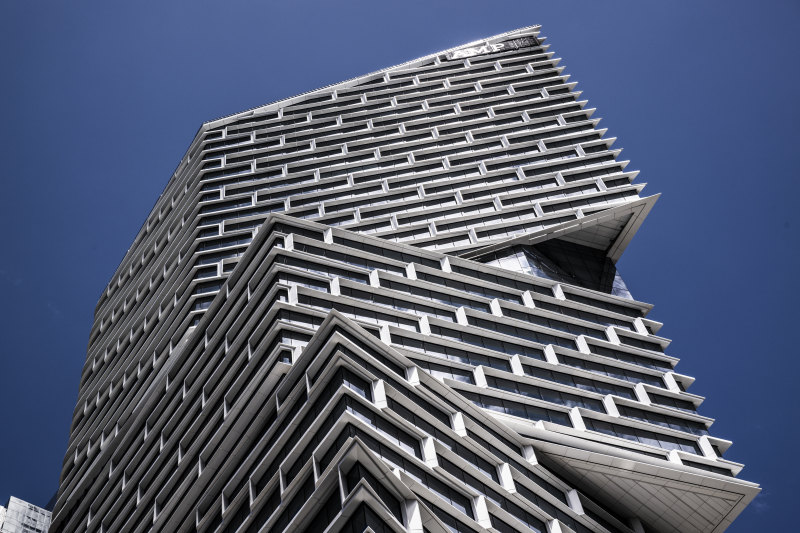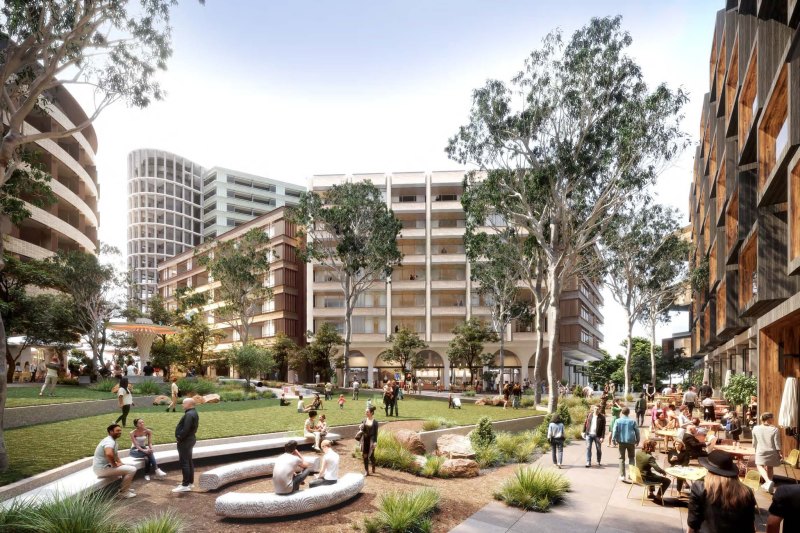
Ice rinks, spas and roller-coasters: Australia’s great hotel reno boom
Hundreds of millions of dollars are being spent updating faded landmark hotels as owners and operators invest to compete with the next generation of sparkling new accommodation palaces opening across Australia – and grab a share of the reviving tourism economy, expected to be worth $230 billion by 2030.
Hotel mogul Jerry Schwartz is spending up big, adding roller-coasters, water park, and ice rinks to his hotels and resorts. At the Sofitel Darling Harbour he’s spent $4 million on a day spa, and $500,000 for a whisky bar on the top floor.

But, while lacking the shiny facades and in-built techno bells and whistles of the new Ritz-Carlton Melbourne, Capella Sydney or soon-to-open W Sydney at Darling Harbour (part of a wave of almost 10,000 new hotel rooms to open this year and next) many older hotels have distinct advantages over their new competitors, including occupying prime CBD locations.
“All the new supply is not in the best locations because all the best ones are already occupied by existing hotels,” Norman Arundel, head of hotels at ASX-listed hotel and entertainment giant EVT Limited, tells The Australian Financial Review.
Arundel is overseeing one of EVT’s biggest hotel renovation projects, the complete refurbishment and redevelopment of the Rydges Melbourne. While undisclosed, the construction budget is understood to be in the tens of millions of dollars.
Built in the early 1970s in a brutalist style, the 23-storey brick and concrete building stands at 186 Exhibition Street in the heart of the city’s famed theatre district. Rydges paid $53 million for it in 1994.
“They aren’t making any more locations like this,” Arundel says.
Next month, the doors will officially swing open to the completely revamped 370-room hotel that will become the flagship for the brand nationally.
Entry into the hotel is through an impressive new lobby, exudes warm tones, a cozy fireplace and lounge and the latest self-check-in technology.
“You won’t see staff standing formally behind check-in desks,” says Arundel.
When The Australian Financial Review visited the hotel, construction workers from Schiavello were racing to put the finishing touches on a new outdoor bar and gym created out of under-utilised back office space and installing a huge digital screen for the 300-person ballroom that will double the hotel’s event space.
Nearly finished is an upmarket restaurant called Bossley that will be open to the public, as are refurbishments to every one of the hotel’s rooms and suites, including 25 self-catering apartments.
Also in Melbourne, fund manager Salter Brothers will soon begin work on a new club lounge within the lobby of the historic and grand InterContinental Melbourne The Rialto on Collins Street.
Cheaper to renovate than build
Due for completion in July 2023 at a cost of about $600,000, the premium club will include lounge seating, a marble buffet, two cosy fireplaces and curated artworks aimed at providing a haven for guests at the five-star hotel.
“It’s a great heritage asset, which we are making some improvements to, to compete against the newer properties,” Salter Brothers managing director Paul Salter told The Australian Financial Review.
In December, Salter Brothers, will complete a refurbishment program for 11 former Travelodge hotels it acquired from Mirvac and NRMA for $620 million in 2021. All are now operated by Accor under brands like Novotel, Sebel and Mercure.
Salter says the refurb and rebranding had already lifted performance.
Given high construction costs and delays, Salter says it makes sense more than ever to buy, renovate and redevelop existing hotels rather than build them from scratch.
“It’s a lower-risk play because it’s typically a much shorter investment horizon,” he says.
“For a new hotel, from start to finish, it’s about a seven-year time frame, whilst you can buy, renovate and trade up an existing hotel within three years.”
The impetus for these projects: forecasts from Austrade that the visitor economy will rebound to pre-COVID spending levels of $166 billion next year amid a longer-term goal to reach $230 billion by 2030.
While new hotels have been fantastic for its network, Accor Pacific boss Sarah Derry says they have also encouraged investment in existing properties the accommodation giant manages.
“New entrants are good for the market,” Derry says.
“[For older properties] you need to make sure your offering is relevant, that you are offering the right guest experience and level of service.”
‘Keep up with the pack’
Accor-operated hotels that have undergone significant renovations include classic five-star Sydney hotels like the Sofitel Wentworth, Sofitel Melbourne and the Swissotel off Pitt Street Mall.
Soon after being snapped up for $315 million by private equity firm KKR and local players Futuro Capital and Marprop in October 2021, the heritage listed Sofitel Wentworth underwent a multimillion-dollar refurbishment, including upgrades to all 436 of its rooms.
In addition to the rooms refresh, the corridors and all the hotel’s conference and event spaces have gone through a transformation, with upgraded audio and visual technology, new carpets and wall fabric. The hotel reopened last year, and is trading exceptionally well, according to Accor.
“A hotel like the Sofitel Wentworth is something unique that cannot be repeated. It’s important to hold on to what makes these properties unique,” says Derry.
At the Paris end of Collins Street, the landmark Sofitel Melbourne underwent a $15 million renovation last year, the first in 15 years.
All 360 guest rooms in the 1981-built hotel (designed by the late world renowned architect I.M Pei) were refreshed with state-of-the-art fixtures, contemporary furniture and carpets to create the feel of a Parisian apartment.
Back in Sydney, the five-star Swissotel on Market Street recently unveiled a new lobby bar on level eight designed to hark back to the grand palm court bars of the past and accentuate the existing 1930s architecture. A European-inspired rooftop pool was also added as part of a multimillion-dollar refurbishment.
Also spending big on enhancing his suite of hotels including the five-star, 590-room Sofitel Sydney Darling Harbour is hotel mogul Jerry Schwartz.
“You have to keep up with the pack. We’ve been an early adopter to stay ahead,” he tells The Australian Financial Review.
While Schwartz welcomes the new competition including a new Waldorf Astoria at Circular Quay, acquired by mining magnate Andrew Forrest for $520 million that will open in 2025, he agreed with Paul Salter that buying and improving older hotels “with potential” could generate better returns than developing something new given the prohibitive cost of building.
At his Fairmont Resort in the Blue Mountains, Schwartz has added an ice skating rink. At his recently rebranded Rydges Hunter Valley he’s put in a water park and is building an equestrian centre. He says he gets many of his ideas from his kids.
“We’re adding other kids’ facilities at Rydges like a [25-metre high] ferris wheel, and we’re importing a roller-coaster. We’re also putting one into our Paradise Resort on the Gold Coast,” says Schwartz.
“That’s for the kids. For the adults, there’s a whisky bar going into the Fairmont. In the Hunter, we’ve upgraded all the rooms and the foyer.”
Even at the Sofitel Sydney Darling Harbour, a relatively new hotel (completed in 2017) Schwartz is investing money to add new amenities.
“We’ve spent $4 million to split a floor into two levels to create a beautiful day spa. We’ve also spent $500,000 adding a whisky bar on to the top floor.
“We’re also spending a lot of money to make the technology better.”
Schwartz says a lot of the returns on these investments are indirect (though the whisky bars make good money).
“Kids say to their parents, ‘I want to go to that hotel again’.”
While much of hotel giant Marriott’s expansion of late has been through new offerings like the Ritz-Carlton in Melbourne and soon-to-open W in Sydney, regional head of development Richard Crawford says the pandemic provided the impetus for many owners to invest in their hotels to compete.
“Hotels were starved of capital expenditure pre-COVID because they were so full, owners didn’t need to do anything. They weren’t spending money on their rooms,” he says.
“COVID brought with it a practical moment in time to do refurbishments.”
The wave of new hotels and refurbishments have been timely, he says, because Australia was starting to lag at a global level.
Double-digit returns
“We welcome this reinvestment happening right now. Those that are selling their hotels are the ones choosing not to spend the money. The new owners will spend money.
“Many have sold with vacant possession. That’s when a new owner will reinvest, chasing financial upside. You have to put more money in to get money out.”
Stephen Burt, managing director at advisory firm Hotel Capital Partners, says hotel investors need to pivot to value-add investments to ensure the same level of returns amid a high-interest rate environment.
“Investors cannot achieve the returns previously available by simply buying and holding and then relying on capitalisation rate contraction and a modest level of refurbishment,” Burt says.
Common value-add strategies, he says, include a change of operator if possible under a vacant possession scenario as Salter Brothers has done with the Travelodge portfolio, asset enhancement through significant capital expenditure, or a change in the operating business model such as upgrading a hotel from a three to four-star property.
Burt agrees with EVT’s Arundel that location and good bones are important base requirements for any turnaround strategy. If executed cleverly, owners could generate double-digit returns.
With most major refurbishments triggered by change of ownership, Burt tips plenty more on the horizon.
“Based on the extent of hotel sales over the last 12 months and the anticipated sales over the next 12 months, including a lot of old inventory, we think it is reasonable to assume there will be a significant increase in refurbishment activity over the next two years.”










